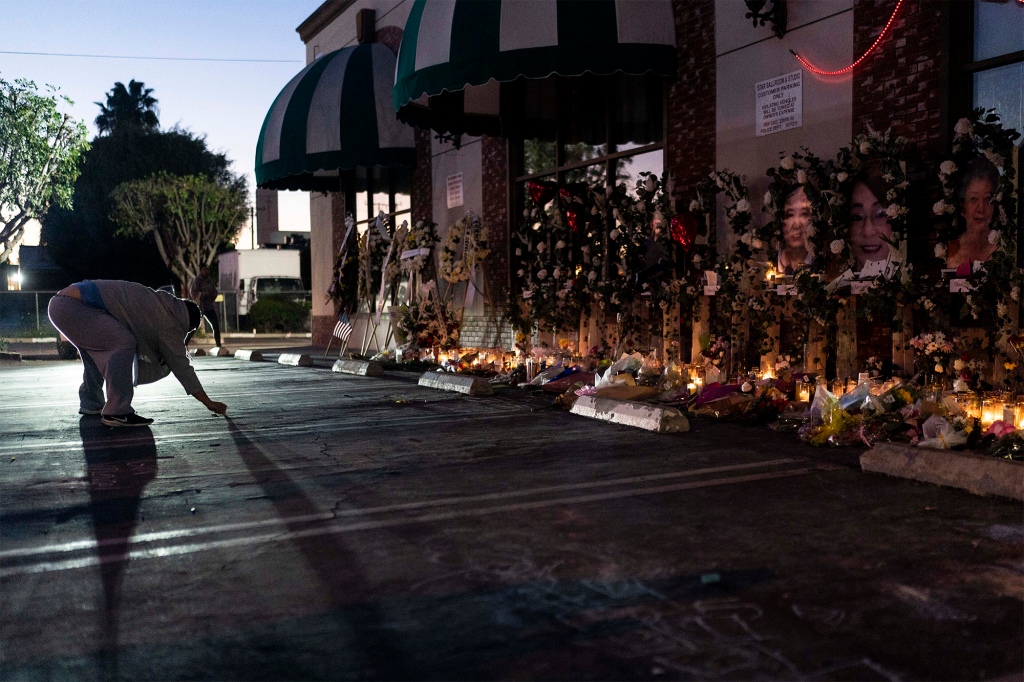Audio from Monterey Park shooting 911 reveals terror of victims
LOS ANGELES — A gunman had fired his first deadly shots outside a dance hall when Monterey Park police got a call for help from a man trying to make sense of what happened to his partner sitting in the car next to him.
“Is your girlfriend awake?” the dispatcher asked.
“I’m not sure,” the caller said.
Audio from the 911 recordings released Thursday provides a sense of the confusion and chaos that unfolded Jan. 21 at the Star Ballroom Dance Studio on a night that had been full of celebration for the Lunar New Year.
Police said Huu Can Tran, 72, a onetime fixture at the ballroom who told people he was a dance instructor, killed 11 people and wounded nine with a submachine gun-style semiautomatic handgun. Of the six women and five men killed, one woman was in her 50s and the rest were in their 60s and 70s.
Tran fled from the shooting in a white van and about 20 minutes later entered a dance hall in nearby Alhambra, where a quick-thinking employee lunged for the weapon and disarmed him after a short struggle. Tran killed himself the next morning as police surrounded his van.

In the course of just over three minutes, Monterey Park police dispatchers fielded three 911 calls. One came from a man who had run from the club after seeing the gunman open fire near the dance hall entrance. He initially mistook the gunshots for firecrackers.
That man, who said he saw the gunman reloading the weapon as people ran for safety, urged a dispatcher to “send police here right away.”
“He might start shooting again,” the man said in a panicked voice.
The dispatcher asked several times if anyone was hurt. The man said he didn’t know.
“It happened too fast,” he said. “Everybody ran away.”
The man who phoned from the car reported that he and his girlfriend left the party early and someone tried to break a car window as they were leaving. He then said the window had been shot out and his girlfriend was unconscious.
He did not identify the woman, but Mymy Nhan, 65, was identified as the only person shot in the parking lot.
A fire dispatcher pressed for details, asking if the wounded woman could speak.
“My, can you talk to me?” the caller pleaded. “No, she cannot talk.”
The dispatcher then asked if she was breathing.
“Oh, no,” the man said. “Maybe she die. I’m not sure.”

He then reported she was bleeding from the head. The dispatcher assured him police and paramedics were on their way.
Five minutes into the call, a police dispatcher, who had remained on the line after connecting the caller with the fire department, asked what kind of car the man was in and told him to wave down officers for help.
“Come here, please. Help!” the man could be heard yelling. “Right here! Right here! Right here!”
The police dispatcher then notified his peer in the fire department there are “several gunshot victims inside.”
“Inside the same car?” the fire dispatcher asked.
The police dispatcher clarified that he meant the business — the dance hall.
After this exchange, some seven minutes into the call, the man could still be heard calling for help.
The police dispatcher told him to keep waving. Eventually, he said, “They’re here. they’re here.”
Nhan, an immigrant from Vietnam who was a regular at the club and loved to dance, was one of the first victims named after the massacre.
Three weeks earlier, she had lost her mother, whom she had cared for, her niece, Fonda Quan, told The Associated Press. She had gone to the club to celebrate with friends and was ready to “start the year fresh.”
Read the full article Here


